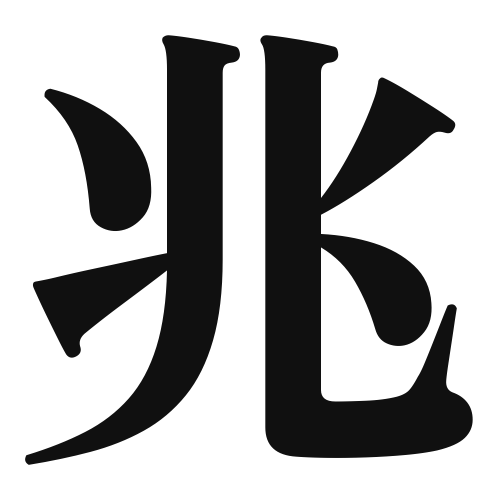1. Overview of Meaning
The kanji “兆” (chō) primarily means “trillion” in the context of numbers. It can also refer to an omen or sign, particularly in a more abstract or metaphorical sense.
2. Formation and Radical
Formation of the Kanji: The kanji “兆” is a phonetic-ideographic character (形声文字). It combines the meaning of a sign or omen with a phonetic component that suggests its pronunciation.
Radical: The radical for “兆” is “兆” itself, which is used in various contexts related to signs and indications.
3. Examples of Usage
Common Words and Phrases: Some frequently used terms include “兆円” (chōen), meaning “trillion yen,” and “兆候” (chōkō), meaning “omen” or “sign.”
Example Sentences in Daily Conversation:
- 「今年の経済成長は兆円を超えると予測されています。」(This year’s economic growth is expected to exceed a trillion yen.)
- 「彼の行動には何か兆候がある。」(There is some sign in his behavior.)
4. Synonyms and Antonyms
Similar Kanji: A similar kanji is “印” (in), which means “mark” or “seal.” While both relate to signs, “兆” often implies a more significant or foreboding sign, whereas “印” is more neutral.
Opposite Kanji: An antonym could be “消” (shō), meaning “to extinguish” or “to disappear,” as it represents the absence of signs or indications.
5. Cultural and Historical Background
Relation to Japanese Culture: The concept of “兆” is significant in Japanese culture, especially in contexts like fortune-telling and omens, where signs are interpreted to predict future events.
Proverbs and Idioms: An example of an idiom is “兆しが見える” (kizashi ga mieru), which means “a sign is visible,” often used to indicate that something good or bad is about to happen.
